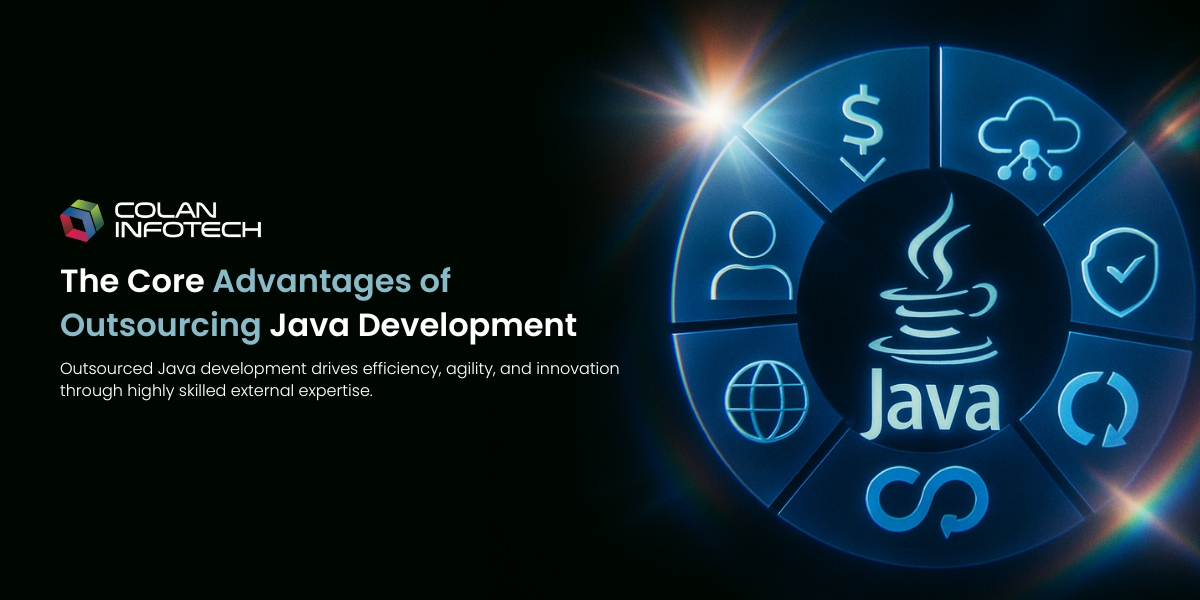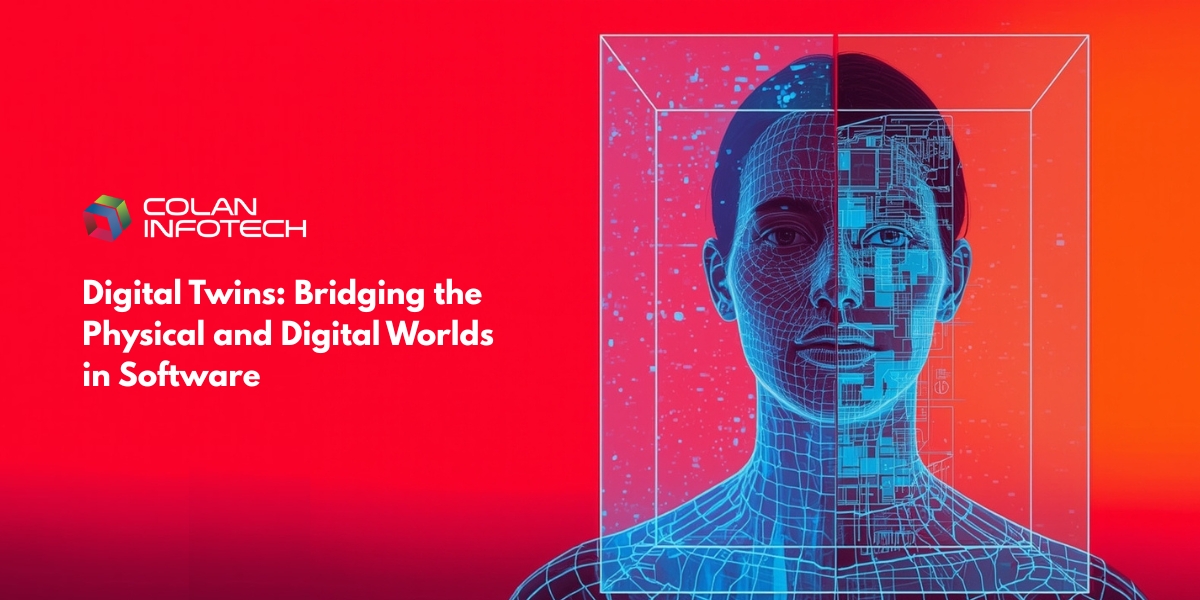Are You Building Your Gee Whiz Software Project? Waterfall vs Agile
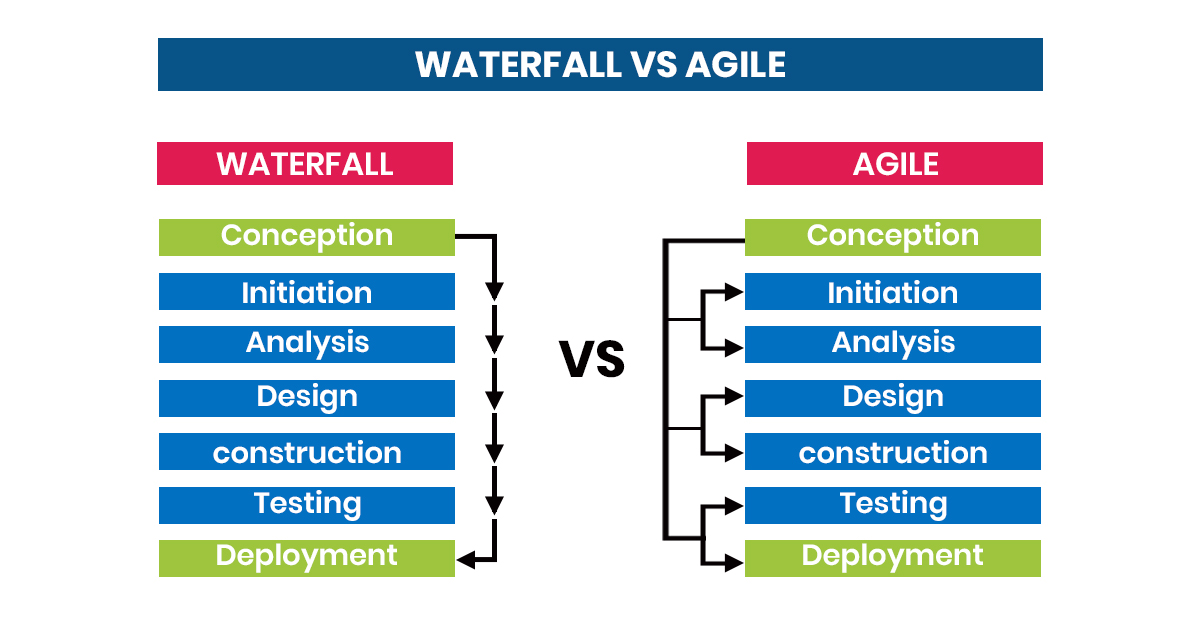
4 min read | By Postpublisher P | 31 August 2022 | Technology
Do you ever think how in the world is software really created? It must be one heck of an adventure for the software creators. But, let us demystify the cloud in your head about the intricacies of software development.
There are rules and processes that exist in almost every industry. When it comes to software creation, we call it the Software Development Life Cycle (SDLC). It is the managing science behind creating that ‘makes my life easy’ software that you use daily.
Maybe you are a business owner trying to figure out the right software methodology. There are all kinds of software projects out in the world. Many years back I worked on a Human Resource project that took nearly 5 years to complete. And, of course there are plenty of projects in mobile and web applications that are completed within a year. In an amalgam of software projects, how can you decide which software methodology works best for your project – Waterfall model vs agile model?
Your answer is just a few steps away. All you need to do is consider a few factors and your answer lies right there. For instance, is your project fixed in scope or likely to change? Does your project need periodic client interaction or not? Is the budget fixed or flexible? Answering these questions will get you closer towards choosing the right software methodology.
In our article, we will talk about the two most popular software methodologies widely in use namely Agile and Waterfall model. Understanding the difference between waterfall model and agile model is crucial for effective and efficient software development.
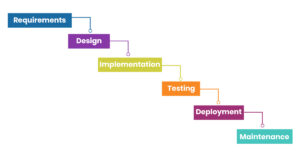 Let’s start with the Waterfall development methodology. Software projects come in all sizes and complexity. There are projects in certain industries that are usually fixed in their scope of work. The waterfall development methodology works best in such scenarios.
Let’s start with the Waterfall development methodology. Software projects come in all sizes and complexity. There are projects in certain industries that are usually fixed in their scope of work. The waterfall development methodology works best in such scenarios.
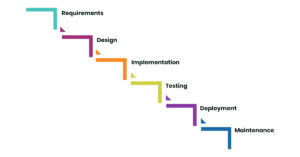 𝐅𝐢𝐠𝐮𝐫𝐞 𝟏. The sequential flow of the Waterfall model
Let me try to make this easy on you by giving a military analogy. Say, there is an army in the battle field that needs to conquer 10 hills before declaring victory. In a waterfall model, the commander-in-chief will lay out the entire battle plan up to the 10th hill.
Every detail of the battle plan is completely planned before going for the fight. Any changes that may happen in the middle of the battle may not be easy to deal with in the Waterfall model.
Waterfall development methodology is best applied in projects that are fixed in nature. You will find the use of this model in industries like construction, engineering, and even specialized services like Water removal NYC, where project plans are fixed. The software cycle for these projects moves sequentially from idea to the finished software product in a step-by-step phase.
𝐅𝐢𝐠𝐮𝐫𝐞 𝟏. The sequential flow of the Waterfall model
Let me try to make this easy on you by giving a military analogy. Say, there is an army in the battle field that needs to conquer 10 hills before declaring victory. In a waterfall model, the commander-in-chief will lay out the entire battle plan up to the 10th hill.
Every detail of the battle plan is completely planned before going for the fight. Any changes that may happen in the middle of the battle may not be easy to deal with in the Waterfall model.
Waterfall development methodology is best applied in projects that are fixed in nature. You will find the use of this model in industries like construction, engineering, and even specialized services like Water removal NYC, where project plans are fixed. The software cycle for these projects moves sequentially from idea to the finished software product in a step-by-step phase.
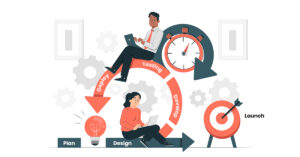 After learning about the waterfall model, let’s go through the Agile process. There are projects that have a higher level of uncertainty requiring a flexible and adaptive approach to arrive at a solution. Also in a few cases, the business owner may want to be involved with the project in giving timely suggestions or feedback. Agile software methodology works best in such situations.
After learning about the waterfall model, let’s go through the Agile process. There are projects that have a higher level of uncertainty requiring a flexible and adaptive approach to arrive at a solution. Also in a few cases, the business owner may want to be involved with the project in giving timely suggestions or feedback. Agile software methodology works best in such situations.
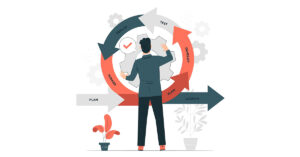 Agile takes a collaborative approach towards software development where requirements and solutions work side by side in an iterative manner. In Agile development, self-organising and cross-functional teams discover and build a solution through an iterative process unlike Waterfall methodology where everything is planned at the beginning.
A typical Agile process might look like:
⒈ Gather a few initial requirements
⒉ Design
⒊ Develop
⒋ Test
⒌ Deploy
⒍ Evaluate the micro outcome (initial software)
⒎ Collect feedback on the software
⒏ Create new requirements for next iterative developments and repeat the process until the final product is achieved.
Agile takes a collaborative approach towards software development where requirements and solutions work side by side in an iterative manner. In Agile development, self-organising and cross-functional teams discover and build a solution through an iterative process unlike Waterfall methodology where everything is planned at the beginning.
A typical Agile process might look like:
⒈ Gather a few initial requirements
⒉ Design
⒊ Develop
⒋ Test
⒌ Deploy
⒍ Evaluate the micro outcome (initial software)
⒎ Collect feedback on the software
⒏ Create new requirements for next iterative developments and repeat the process until the final product is achieved.
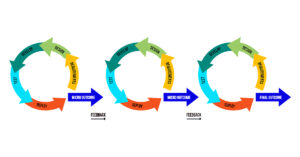 𝐅𝐢𝐠𝐮𝐫𝐞 𝟐. Shows the iterative sprints of Agile development process.
How does the agile process work relating to our military analogy? In an agile process, the army focuses one hill at a time. The commander-in-chief plans to conquer the first hill before moving to any other. The battle continues one hill after the other until the last hill is reached. The army has a lot of information by the time it reaches the last but one hill to win the battle eventually.
Agile methods are used in projects where changes are more frequent, ideas are innovative, business owners want to offer feedback, where timeline and budget is flexible.
𝐅𝐢𝐠𝐮𝐫𝐞 𝟐. Shows the iterative sprints of Agile development process.
How does the agile process work relating to our military analogy? In an agile process, the army focuses one hill at a time. The commander-in-chief plans to conquer the first hill before moving to any other. The battle continues one hill after the other until the last hill is reached. The army has a lot of information by the time it reaches the last but one hill to win the battle eventually.
Agile methods are used in projects where changes are more frequent, ideas are innovative, business owners want to offer feedback, where timeline and budget is flexible.
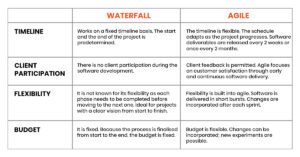
Waterfall Model – Everything is Planned Upfront
 Let’s start with the Waterfall development methodology. Software projects come in all sizes and complexity. There are projects in certain industries that are usually fixed in their scope of work. The waterfall development methodology works best in such scenarios.
Let’s start with the Waterfall development methodology. Software projects come in all sizes and complexity. There are projects in certain industries that are usually fixed in their scope of work. The waterfall development methodology works best in such scenarios.
What is a Waterfall Model?
Waterfall model is a sequence of project steps wherein one phase of activity must be completed before moving to the next one. For example, in a waterfall development methodology the planning phase needs to be completed and approved by the project stakeholders before moving to the next phase, say design. This sequential way of working things gives the waterfall model the needed structure and simplicity. The typical sequence of steps in a Waterfall development model looks something like this: ⒈ Gather requirements and document ⒉ Design ⒊ Development ⒋ Testing ⒌ Deployment 𝐅𝐢𝐠𝐮𝐫𝐞 𝟏. The sequential flow of the Waterfall model
Let me try to make this easy on you by giving a military analogy. Say, there is an army in the battle field that needs to conquer 10 hills before declaring victory. In a waterfall model, the commander-in-chief will lay out the entire battle plan up to the 10th hill.
Every detail of the battle plan is completely planned before going for the fight. Any changes that may happen in the middle of the battle may not be easy to deal with in the Waterfall model.
Waterfall development methodology is best applied in projects that are fixed in nature. You will find the use of this model in industries like construction, engineering, and even specialized services like Water removal NYC, where project plans are fixed. The software cycle for these projects moves sequentially from idea to the finished software product in a step-by-step phase.
𝐅𝐢𝐠𝐮𝐫𝐞 𝟏. The sequential flow of the Waterfall model
Let me try to make this easy on you by giving a military analogy. Say, there is an army in the battle field that needs to conquer 10 hills before declaring victory. In a waterfall model, the commander-in-chief will lay out the entire battle plan up to the 10th hill.
Every detail of the battle plan is completely planned before going for the fight. Any changes that may happen in the middle of the battle may not be easy to deal with in the Waterfall model.
Waterfall development methodology is best applied in projects that are fixed in nature. You will find the use of this model in industries like construction, engineering, and even specialized services like Water removal NYC, where project plans are fixed. The software cycle for these projects moves sequentially from idea to the finished software product in a step-by-step phase.
Agile – Change is the Name of the Game
 After learning about the waterfall model, let’s go through the Agile process. There are projects that have a higher level of uncertainty requiring a flexible and adaptive approach to arrive at a solution. Also in a few cases, the business owner may want to be involved with the project in giving timely suggestions or feedback. Agile software methodology works best in such situations.
After learning about the waterfall model, let’s go through the Agile process. There are projects that have a higher level of uncertainty requiring a flexible and adaptive approach to arrive at a solution. Also in a few cases, the business owner may want to be involved with the project in giving timely suggestions or feedback. Agile software methodology works best in such situations.
What is an Agile Methodology?
 Agile takes a collaborative approach towards software development where requirements and solutions work side by side in an iterative manner. In Agile development, self-organising and cross-functional teams discover and build a solution through an iterative process unlike Waterfall methodology where everything is planned at the beginning.
A typical Agile process might look like:
⒈ Gather a few initial requirements
⒉ Design
⒊ Develop
⒋ Test
⒌ Deploy
⒍ Evaluate the micro outcome (initial software)
⒎ Collect feedback on the software
⒏ Create new requirements for next iterative developments and repeat the process until the final product is achieved.
Agile takes a collaborative approach towards software development where requirements and solutions work side by side in an iterative manner. In Agile development, self-organising and cross-functional teams discover and build a solution through an iterative process unlike Waterfall methodology where everything is planned at the beginning.
A typical Agile process might look like:
⒈ Gather a few initial requirements
⒉ Design
⒊ Develop
⒋ Test
⒌ Deploy
⒍ Evaluate the micro outcome (initial software)
⒎ Collect feedback on the software
⒏ Create new requirements for next iterative developments and repeat the process until the final product is achieved.
 𝐅𝐢𝐠𝐮𝐫𝐞 𝟐. Shows the iterative sprints of Agile development process.
How does the agile process work relating to our military analogy? In an agile process, the army focuses one hill at a time. The commander-in-chief plans to conquer the first hill before moving to any other. The battle continues one hill after the other until the last hill is reached. The army has a lot of information by the time it reaches the last but one hill to win the battle eventually.
Agile methods are used in projects where changes are more frequent, ideas are innovative, business owners want to offer feedback, where timeline and budget is flexible.
𝐅𝐢𝐠𝐮𝐫𝐞 𝟐. Shows the iterative sprints of Agile development process.
How does the agile process work relating to our military analogy? In an agile process, the army focuses one hill at a time. The commander-in-chief plans to conquer the first hill before moving to any other. The battle continues one hill after the other until the last hill is reached. The army has a lot of information by the time it reaches the last but one hill to win the battle eventually.
Agile methods are used in projects where changes are more frequent, ideas are innovative, business owners want to offer feedback, where timeline and budget is flexible.
Waterfall Model vs. Agile Model
Take a glance at the difference between agile and waterfall model based on important factors tabulated below:
Conclusion
It’s most important that you choose the right software development method for your project. Because it will determine the efficiency quotient of your project development. Agile and Waterfall methodologies have their own purpose. Waterfall development methodology is used in business applications that are fixed in nature. Whereas, Agile works best in flexible applications demanding innovation and creativity. We hope this article helped you in finding the right software methodology to develop your project. Reach out to Colan Infotech for building your software as we serve the tech community for over a decade.The latest from our editors
Join over 150,000+ subscribers who get our best digital insights, strategies and tips delivered straight to their inbox.
